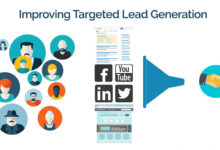Leads Online: 7 Proven Strategies to Skyrocket Your Results
Want to grow your business fast? Mastering leads online is the ultimate game-changer. In today’s digital world, generating high-quality leads isn’t just helpful—it’s essential for survival and growth. Whether you’re a startup or an established brand, understanding how to attract, convert, and nurture leads online can transform your revenue stream. Let’s dive into the strategies that actually work.
What Are Leads Online and Why They Matter

Before diving into strategies, it’s crucial to understand what we mean by ‘leads online’ and why they are the lifeblood of modern marketing. A lead is any individual or organization that shows interest in your product or service. When this interest is captured through digital channels—like websites, social media, or email—we refer to them as leads online.
Defining Leads Online
Leads online are potential customers who have engaged with your brand through digital platforms. This engagement could be as simple as signing up for a newsletter, downloading a free guide, or filling out a contact form. The key difference between offline and online leads is the level of trackability and scalability that digital tools offer.
- Leads online are captured through digital touchpoints like landing pages, social media ads, or chatbots.
- They are often categorized based on behavior, such as page visits, time spent on site, or content downloads.
- Unlike traditional leads, online leads can be automatically scored and nurtured using CRM and marketing automation tools.
Types of Online Leads
Not all leads online are created equal. Understanding the different types helps you tailor your follow-up strategy and improve conversion rates.
Information Qualified Leads (IQLs): These users are in the research phase, seeking information but not yet ready to buy.Example: someone downloading an industry report.Marketing Qualified Leads (MQLs): These leads have shown interest through actions like attending a webinar or subscribing to a premium content series.Sales Qualified Leads (SQLs): These are leads that marketing has passed to sales because they’ve demonstrated buying intent—like requesting a demo or pricing information.
.Product Qualified Leads (PQLs): Common in SaaS businesses, these leads come from users who have experienced the product (e.g., free trial) and shown engagement signals.”A lead is not just a name and email—it’s a human with a problem you can solve.” — HubSpot
Why Leads Online Are the Engine of Digital Growth
Generating leads online is more than a marketing tactic—it’s the foundation of scalable business growth.In an era where 97% of consumers research products online before buying (according to Think with Google), having a strong online lead generation strategy is non-negotiable..
Cost-Effectiveness and Scalability
One of the biggest advantages of generating leads online is the ability to scale with minimal incremental cost. Unlike cold calling or print advertising, digital campaigns can reach thousands—or millions—with precise targeting.
- Pay-per-click (PPC) ads allow you to pay only when someone clicks, making budget control easier.
- Email marketing campaigns can be automated to nurture thousands of leads simultaneously.
- Social media platforms like LinkedIn and Facebook offer advanced targeting options to reach ideal customer profiles.
Measurable Results and Data-Driven Decisions
Leads online come with a treasure trove of data. Every click, form submission, and page view can be tracked, analyzed, and optimized.
- Tools like Google Analytics and HubSpot allow you to measure conversion rates, cost per lead, and lead quality.
- A/B testing helps refine landing pages, CTAs, and email subject lines for maximum performance.
- Behavioral data enables personalized follow-ups, increasing the chances of conversion.
7 Proven Strategies to Generate Leads Online
Now that we understand what leads online are and why they matter, let’s explore seven battle-tested strategies to generate them consistently and effectively.
1. Optimize Your Website for Lead Conversion
Your website is your 24/7 salesperson. If it’s not optimized to capture leads online, you’re leaving money on the table.
- Use clear, compelling calls-to-action (CTAs) above the fold.
- Implement pop-ups or slide-ins with valuable lead magnets (e.g., free templates, checklists).
- Ensure fast loading speed and mobile responsiveness—Google penalizes slow sites.
For example, Neil Patel uses exit-intent pop-ups to offer free SEO tools, capturing leads who are about to leave his site.
2. Create High-Value Lead Magnets
A lead magnet is an incentive offered in exchange for contact information. The better the value, the higher the conversion rate.
- E-books and whitepapers for in-depth knowledge.
- Free trials or freemium models for SaaS companies.
- Webinars and live training sessions that provide real-time value.
According to Campaign Monitor, lead magnets can increase conversion rates by up to 78% when properly targeted.
3. Leverage Content Marketing
Content is king when it comes to attracting leads online. But not just any content—strategic, SEO-optimized content that answers real customer questions.
- Write blog posts targeting long-tail keywords like “how to generate leads online for small business.”
- Create video tutorials and host them on YouTube with links to landing pages.
- Repurpose content into infographics, podcasts, and social media snippets.
Companies that blog regularly generate 67% more leads online than those that don’t (Source: Entrepreneur).
4. Run Targeted Paid Advertising Campaigns
Paid ads can accelerate your lead generation efforts, especially when you’re just starting out.
- Google Ads: Target high-intent keywords like “best CRM for leads online.”
- Facebook & Instagram Ads: Use detailed audience targeting based on interests, behaviors, and demographics.
- LinkedIn Ads: Ideal for B2B companies looking to generate professional leads online.
Pro tip: Always direct paid traffic to dedicated landing pages, not your homepage. Conversion rates can increase by 200–300% with a focused message.
5. Build an Email List with Smart Opt-Ins
Email remains one of the highest ROI channels for nurturing leads online. But you need permission to email—hence, opt-ins are critical.
- Use double opt-in forms to ensure list quality and compliance with GDPR.
- Offer tiered lead magnets: a small freebie for a name/email, and a bigger reward for answering qualifying questions.
- Segment your list from day one (e.g., by industry, interest, or behavior) for better personalization.
According to Mailchimp, segmented email campaigns have a 14.31% higher open rate and 100.95% higher click-through rate.
6. Use Social Media to Engage and Convert
Social media isn’t just for brand awareness—it’s a powerful tool for generating leads online when used strategically.
- Host live Q&A sessions on Instagram or Facebook to collect attendee emails.
- Use LinkedIn to publish thought leadership articles with embedded lead capture forms.
- Run lead generation ads on Facebook that open a form directly in the platform.
Facebook’s lead ads, for example, can reduce friction by auto-filling user info, increasing conversion rates by up to 50%.
7. Implement Chatbots and Live Chat
Real-time engagement can turn website visitors into leads online instantly.
- Use AI-powered chatbots to answer FAQs and qualify leads 24/7.
- Trigger chat messages based on user behavior (e.g., after 60 seconds on a pricing page).
- Integrate chat with your CRM to automatically log lead details.
Companies using live chat report a 20% increase in qualified leads online (Source: Zendesk).
Tools and Platforms to Capture Leads Online
Generating leads online is only half the battle. You also need the right tools to capture, manage, and nurture them effectively.
CRM Systems for Lead Management
A Customer Relationship Management (CRM) system is essential for organizing and tracking leads online.
- HubSpot CRM: Free, user-friendly, and packed with automation features.
- Salesforce: Powerful for large teams with complex sales cycles.
- Zoho CRM: Affordable and customizable for small to mid-sized businesses.
These platforms allow you to score leads, set reminders, and automate follow-ups—ensuring no lead falls through the cracks.
Landing Page Builders
Your landing page is where the magic happens. It needs to be fast, focused, and frictionless.
- Unbounce: Drag-and-drop builder with A/B testing and AI copywriting tools.
- Leadpages: Great for beginners with pre-designed templates.
- Carrd: Simple, one-page sites perfect for quick lead capture.
Tip: Always test your landing page on mobile devices—over 60% of web traffic comes from mobile (Source: Statista).
Email Marketing Platforms
Once you’ve captured leads online, you need to nurture them. Email marketing platforms make this scalable.
- Mailchimp: Ideal for beginners with automation and analytics.
- Klaviyo: Best for e-commerce brands with advanced segmentation.
- ConvertKit: Designed for creators and bloggers.
Automated email sequences can nurture leads over days or weeks, guiding them toward a purchase decision.
How to Qualify and Nurture Leads Online
Not every lead is ready to buy. Your job is to identify which ones are and guide the others toward readiness.
Lead Scoring: Prioritize the Best Leads
Lead scoring assigns points based on behavior and demographics to identify high-potential leads online.
- Positive actions: Visiting pricing page (+10), downloading a case study (+15), attending a webinar (+20).
- Negative actions: Unsubscribing (-20), bouncing from key pages (-5).
- Demographic fit: Job title, company size, industry—aligned with your ideal customer profile.
Once a lead reaches a threshold (e.g., 50 points), they’re passed to sales.
Lead Nurturing Through Drip Campaigns
Nurturing turns cold leads into warm prospects. Drip campaigns deliver the right message at the right time.
- Day 1: Welcome email with your lead magnet.
- Day 3: Share a customer success story.
- Day 7: Offer a free consultation or demo.
- Day 14: Send a limited-time offer to create urgency.
According to Marketo, nurtured leads make 47% larger purchases than non-nurtured leads.
Personalization and Behavioral Triggers
Generic emails get ignored. Personalized, behavior-based messages get results.
- Send a follow-up email if a lead downloads a pricing guide but doesn’t contact sales.
- Recommend related content based on what they’ve read.
- Use dynamic content in emails that changes based on the recipient’s location or role.
Personalization can boost conversion rates by up to 20% (Source: Experian).
Common Mistakes When Generating Leads Online
Even experienced marketers make mistakes. Avoiding these pitfalls can save you time, money, and frustration.
Ignoring Lead Quality for Quantity
It’s tempting to chase high volumes of leads online, but if they’re not qualified, they won’t convert.
- Focusing only on form fills without assessing intent.
- Using misleading ads that attract the wrong audience.
- Not aligning marketing and sales on what constitutes a good lead.
Solution: Define your Ideal Customer Profile (ICP) and use lead scoring to filter out low-quality leads.
Poor Follow-Up and Nurturing
80% of leads online are lost due to lack of follow-up (Source: Salesforce).
- Waiting too long to contact a new lead.
- Sending generic, one-size-fits-all messages.
- Not having a nurturing sequence in place.
Solution: Automate follow-ups and create a multi-touch nurturing strategy.
Not Tracking or Analyzing Performance
If you’re not measuring, you’re guessing.
- Failing to set up conversion tracking on your website.
- Not reviewing campaign performance weekly.
- Ignoring metrics like cost per lead, conversion rate, and lead-to-customer ratio.
Solution: Use dashboards to monitor KPIs and adjust strategies based on data.
Future Trends in Leads Online Generation
The way we generate leads online is evolving fast. Staying ahead of trends ensures you remain competitive.
AI and Predictive Lead Scoring
Artificial intelligence is transforming lead qualification.
- AI analyzes historical data to predict which leads are most likely to convert.
- Tools like Salesforce Einstein use machine learning to prioritize leads.
- Chatbots use AI to qualify leads in real time during conversations.
By 2025, 80% of marketing operations will be automated, according to Gartner.
Voice Search and Visual Search Optimization
As users shift to voice assistants and image-based searches, optimizing for these channels is critical.
- Optimize content for natural language queries (e.g., “Hey Siri, find CRM tools for small business leads online.”)
- Use structured data and image alt text to improve visibility in visual search.
- Ensure your Google Business Profile is up-to-date for local lead generation.
Privacy-First Lead Generation
With increasing regulations (GDPR, CCPA) and browser changes (e.g., third-party cookie deprecation), privacy is paramount.
- Focus on first-party data collection through transparent opt-ins.
- Offer value in exchange for data—don’t just ask for emails.
- Build trust with clear privacy policies and data usage disclosures.
The future belongs to brands that respect user privacy while delivering value.
Case Studies: Real Success with Leads Online
Nothing proves a strategy better than real-world results. Let’s look at two companies that mastered leads online.
Case Study 1: SaaS Company Doubles Leads with Content Marketing
A mid-sized SaaS company offering project management tools struggled to generate qualified leads online. They launched a content strategy focused on solving common project management pain points.
- Published 2 blog posts per week targeting long-tail keywords.
- Created a free “Project Timeline Template” as a lead magnet.
- Used LinkedIn ads to promote top-performing content.
Result: Organic traffic increased by 150% in 6 months, and leads online grew by 112%.
Case Study 2: E-commerce Brand Boosts Conversions with Chatbots
An online fashion retailer noticed high cart abandonment rates. They implemented a chatbot to engage visitors in real time.
- Chatbot offered style advice and discount codes.
- Captured email addresses from users who engaged.
- Integrated with Klaviyo for automated follow-up emails.
Result: Lead capture rate increased by 40%, and sales from chatbot-nurtured leads rose by 25%.
How do I start generating leads online?
Begin by defining your target audience and creating a high-value lead magnet. Set up a landing page with a clear call-to-action and promote it through social media, email, or paid ads. Use a CRM to track and follow up with leads.
What’s the best channel for leads online?
There’s no one-size-fits-all answer. Content marketing and SEO work well for long-term growth, while paid ads deliver faster results. The best approach is often a mix of channels tailored to your audience.
How many leads online should I expect per month?
It depends on your industry, budget, and strategy. A small business might generate 50–100 qualified leads online per month, while larger companies can generate thousands. Focus on quality over quantity.
How do I convert leads online into customers?
Nurture leads with personalized email sequences, provide social proof (testimonials, case studies), and offer a clear next step (demo, consultation, trial). Follow up promptly and consistently.
Are leads online better than offline leads?
Leads online offer greater scalability, trackability, and lower cost per acquisition. However, offline leads (e.g., trade shows) can be highly qualified. The best strategy often combines both.
Generating leads online is no longer optional—it’s the backbone of modern business growth. From optimizing your website and creating compelling content to leveraging AI and automation, the strategies outlined in this guide provide a complete roadmap. The key is consistency, measurement, and a relentless focus on delivering value. Start implementing these tactics today, and watch your pipeline fill with high-quality leads ready to convert. The future of your business depends on it.
Further Reading:



